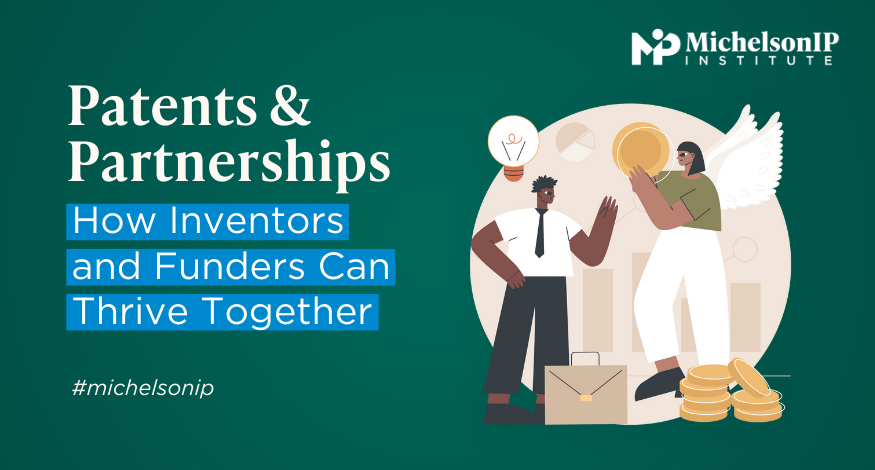Innovation thrives on collaboration. Behind every groundbreaking invention is the ingenuity of the inventor and support of funders who help bring ideas to life.
Great inventions demand more than creativity and technical brilliance—they require resources, connections, and strategic insight. For inventors, collaboration with funders turns promising ideas into tangible success. Building and nurturing these partnerships is crucial for inventors who want to realize their vision and make an impact.
Why Collaboration Matters in Innovation
Invention is a deeply creative process, but even the most ingenious ideas require resources to grow. That’s where funders come in, providing more than just financial backing. Funders also offer mentorship, business expertise, and access to key networks, accelerating an inventor’s journey from concept to market.
Successful collaboration, however, isn’t solely about fiscal backing—it’s about alignment. The strongest inventor-funder relationships rely on shared goals, mutual respect, and clear expectations. When these elements align, both parties invest fully in the invention’s success.
The Key Ingredients of a Successful Inventor-Funder Partnership
Understand Each Other’s Motivations
Inventors and funders often come to the table with different priorities. An inventor might be focused on the technical brilliance or social impact of their idea, while a funder may prioritize market potential or financial return. Bridging this gap requires early, open conversations to align goals. Ask questions such as:
- What does success look like for each of us?
- What is our risk tolerance?
- What is the anticipated timeline for results?
These discussions build trust and ensure both sides work toward the same vision.
Protect IP from the Start
An inventor’s most valuable asset is typically their IP. Before sharing ideas with potential funders, inventors should make sure their IP is properly protected. This could mean filing for provisional patents, executing non-disclosure agreements (NDAs), or consulting with an IP attorney. Funders, on the other hand, should respect these safeguards and recognize their role in protecting the inventor’s work. From there, collaborative relationships can flourish based on secured interests without fear of exploitation.
Embrace Transparency and Accountability
Clear, consistent communication is the backbone of any partnership. Inventors should be transparent about challenges, and funders should offer honest feedback and support.
Additionally ,setting milestones and benchmarks for progress helps ensure accountability and gives both sides a way to measure success.For example, an inventor might deliver a prototype within six months, and the funder releases funding based on these milestones. These agreements keep everyone aligned and invested in the process.
Leverage the Strengths of Both Parties
When both sides play to their strengths, the partnership becomes more than the sum of its parts. On one side, inventors excel at thinking outside the box, solving complex problems, and creating new solutions. Funders, meanwhile, tend to bring business expertise, industry knowledge, and the ability to scale ideas. This means that funders can help refine business models, identify markets, and handle regulatory hurdles. At the same time, inventors can focus on perfecting their creations.
Successful Collaboration in Action
A compelling example of successful inventor-funder collaboration is the partnership between Moderna and the Biomedical Advanced Research and Development Authority (BARDA). In the early stages of mRNA technology development, BARDA provided funding and support to help Moderna accelerate research and clinical trials. Moderna brought groundbreaking science, while BARDA contributed resources, regulatory guidance, and risk-sharing. This collaboration was instrumental in the rapid development of the COVID-19 vaccine, a breakthrough that likely saved millions of lives.
The Impact of Collaborative Innovation
Collaboration between inventors and funders fosters more than individual success. It creates a culture of innovation that benefits society as a whole. From life-saving medical technologies to sustainable energy solutions, many impactful inventions result from successful partnerships.
By prioritizing trust, communication, and shared goals, inventors and funders can unlock the full potential of their efforts. In doing so, they can bring groundbreaking ideas to life and share a brighter, more innovative future. Together, they can achieve what neither could accomplish alone—a true partnership for success.
The Michelson Institute for Intellectual Property, an initiative of the Michelson 20MM Foundation, provides access to empowering IP education for budding inventors and entrepreneurs. Michelson 20MM was founded thanks to the generous support of renowned spinal surgeon Dr. Gary K. Michelson and Alya Michelson. To learn more, visit 20mm.org.
